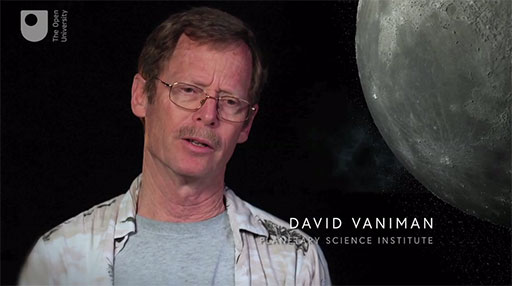1 What we’ve learned about the Moon
Dave Vaniman reflects on his experience of seeing rocks brought back from the Moon, the importance of the interaction with the Moon for the history of life on Earth and what we’ve learned about the Moon.
Last week you learned about the unique characteristics of the surface of our Moon and its exploration by Apollo astronauts. Now you will look in more detail at the rocks on the Moon’s surface and what they can tell us about the formation of the Moon.
It may surprise you to learn that the Moon rocks returned by the Apollo missions are still being analysed today. Unlike rocks on Earth, these samples have not been subjected to terrestrial alteration caused by water (on Earth, even in the desert, rocks on the surface become altered in a few years); neither have they been subjected to contamination by soils and windblown dust. The sophisticated analytical techniques of today allow us to find out more about these amazing samples than we could when they were first returned to Earth and one particularly exciting discovery (water) will be explored next week. This week, you will be introduced to the geology of the lunar surface and the rock types returned by the Apollo missions. You will also be introduced to how planetary scientists examine rocks under the microscope and how these are dated, in order to piece together the structure and formation of the Moon.

